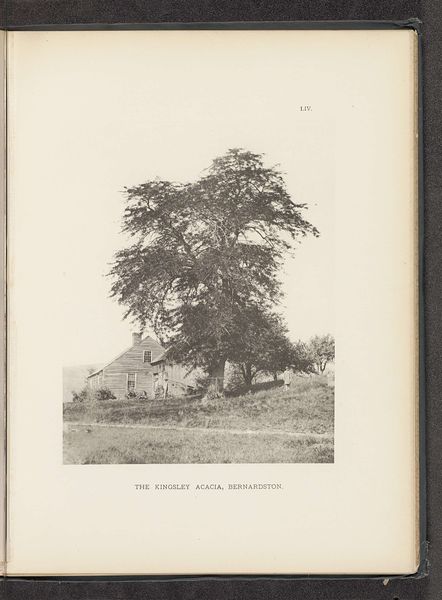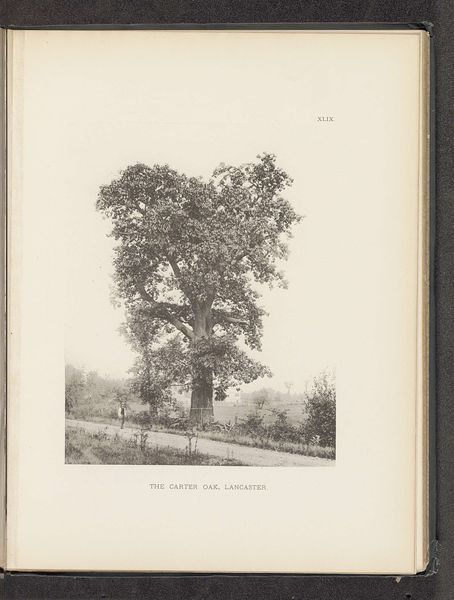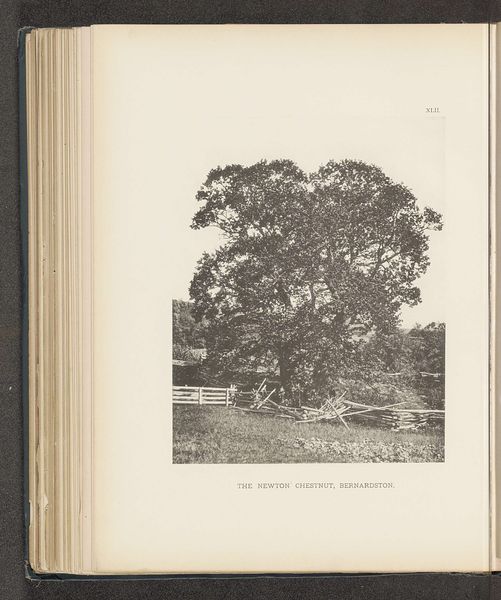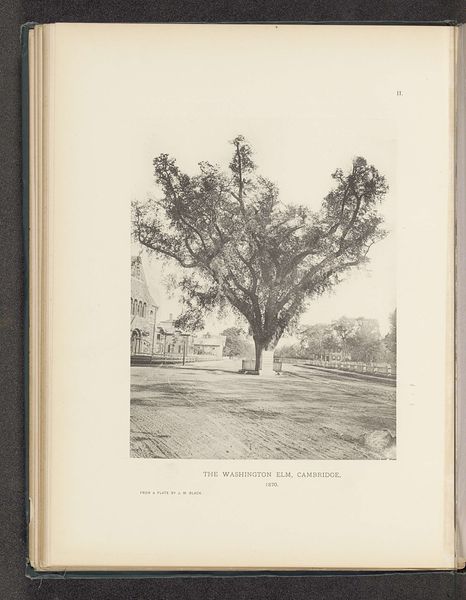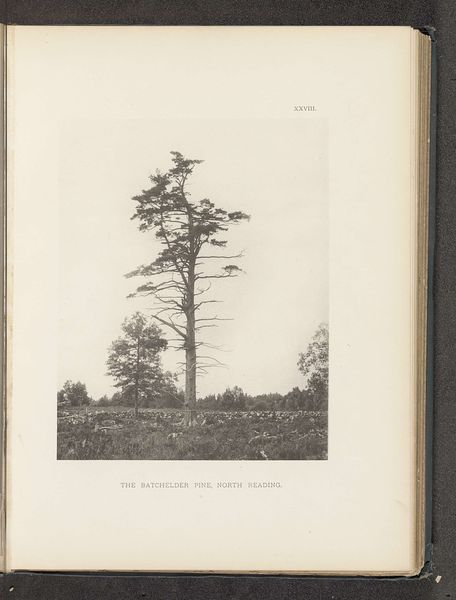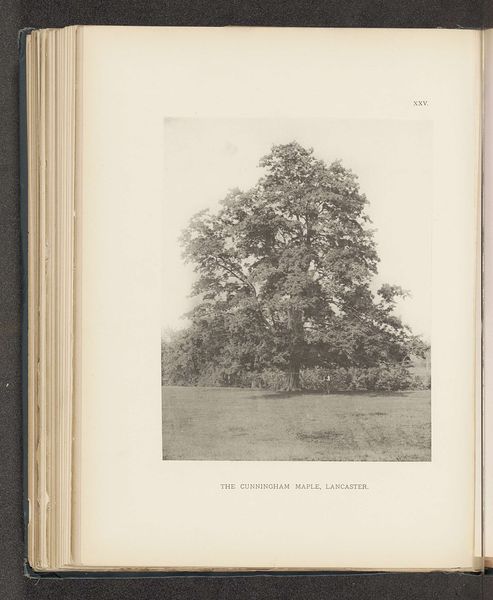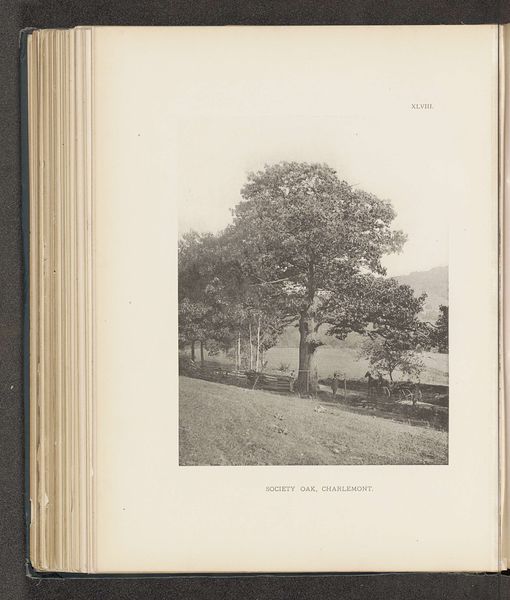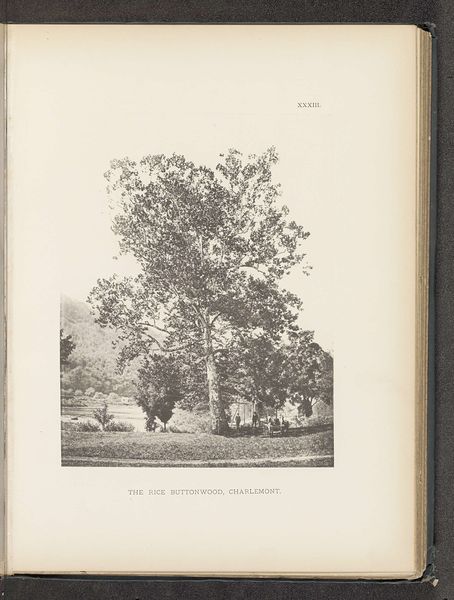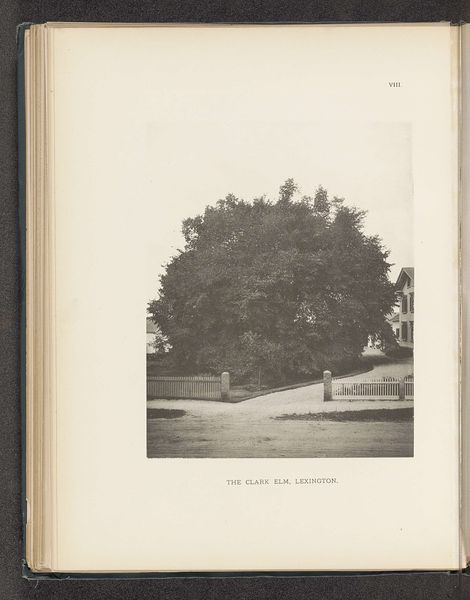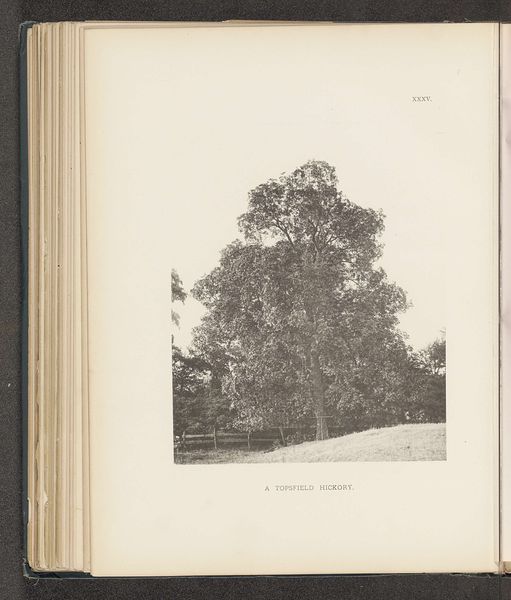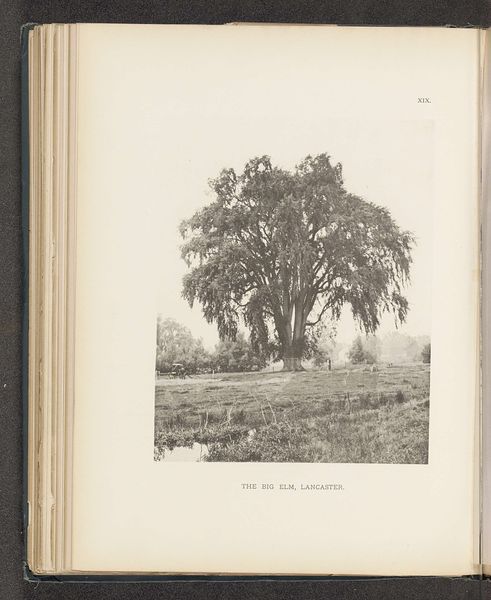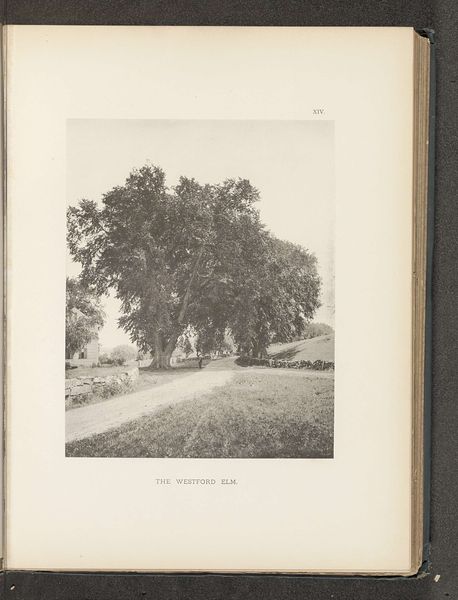
print, photography
# print
#
landscape
#
photography
Dimensions: height 221 mm, width 175 mm
Copyright: Rijks Museum: Open Domain
Curator: Before us is a photograph, a print dating from before 1890, by Henry Brooks. It’s titled “The Batchelder sassafras, Reading." Editor: My first impression is of a serene yet slightly melancholy scene. The stark monochrome palette casts a rather solemn tone. Curator: Precisely. I think we need to delve into how this particular image was made, its materiality, and where it was consumed to really unpack that. Notice the tonal range, its greyscale suggesting perhaps an early printing process, possibly an albumen print or similar technique. These photographic prints were meticulously produced, involving layers of chemical processes and often significant labor in the darkroom. The paper itself, treated with light-sensitive emulsions, speaks to a very different era of image-making than our own. Editor: I see it more simply as the play of light across form. Consider the structure—the tall sassafras is centrally located and draws the eye upwards, its canopy a swirling mass of shapes against a pale sky. The foreground offers horizontal stability, grounding the tree, anchoring our view. It’s all skillfully composed to balance dynamism with quiet contemplation. The way the light falls enhances the tree's natural textures; it is very subtly articulated. Curator: True, and those formal choices affect reception. However, understanding the historical context provides another dimension. Who was Batchelder and why memorialize his sassafras in such a manner? It could easily be a symbol for that moment. The act of photographing the tree suggests something culturally specific: land, ownership, and the aesthetic value placed on rural landscapes. It connects with contemporary ideas about the use and valuation of land as the country expanded westward. Editor: Agreed, the title and rural landscape definitely root it in its locale. It speaks in volumes and silence all at once. A sense of timelessness and history combined. Curator: Looking closely and considering the labor that went into this print allows us to connect it to broader economic and social histories of the late 19th century. It is more than just light and shape. Editor: True, and focusing on form enables the visuality of an era to unfold and perhaps suggest those connections of time and place. Curator: Yes, these lenses ultimately allow us to develop different angles into Henry Brooks' art and work. Editor: A tree of thought!
Comments
No comments
Be the first to comment and join the conversation on the ultimate creative platform.
